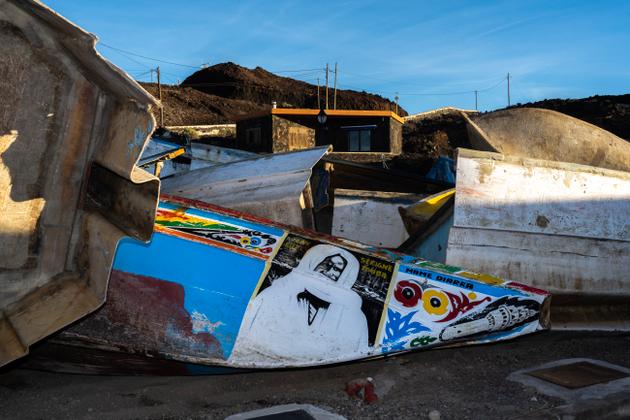


Island of El Hierro: A new gateway for migrants to Spain in the Canary Islands
FeatureIn October alone, over 13,000 migrants landed in the Spanish archipelago, with nearly 7,300 of them arriving on its smallest territory, which is trying to avoid the 'Lampedusa effect,' a term coined after the Italian island overwhelmed by migrant arrivals.
Hull to hull, 12 brightly-colored Senegalese pirogues and as many Mauritanian boats are moored on the jetty of the tiny traditional fishing port of La Restinga, in the Canary Islands. On the quay, two overworked laborers are busy tearing them down to free up space. For a long time, when migrants landed on the island of El Hierro – the smallest and westernmost of the Spanish archipelago – it was only by "accident," as they were lost in the vastness of the Atlantic Ocean that surrounds the steep, rocky, black coast of this ancient volcano located off the coast of southern Morocco. Now, not only do they go there voluntarily, but since this summer, El Hierro, which has just three communes and fewer than 10,000 inhabitants in an area of 268 square kilometers, has become the main gateway to Spain by sea.

"Morocco has stepped up surveillance of its coastline, and even though dinghies and rowboats are still leaving, we're seeing a certain reconfiguration of migratory routes," explained Sofia Hernandez, head of the coordination center of the public sea rescue company Salvamento Maritimo, in Las Palmas de Gran Canaria. "As they move away from the coastline, to avoid being intercepted by the coastguard, before heading north, the pirogues that leave Senegal head straight for El Hierro." If all goes well, after six to eight days at sea and nearly 1,500 kilometers, the passengers – mainly Senegalese, but also Gambians and Guineans – will arrive in this biosphere reserve.
In October alone, almost 7,300 migrants landed there – an unprecedented number in such a short space of time. "Even the 'pirogue crisis' of 2006 can't compare with what's happening here," explained Javier Armas, a senator and town councilor from the village of El Pinar, referring to the 31,000 migrants who landed on the Canary Islands that year. A number that is about to be surpassed: almost 30,000 migrants have already arrived on the archipelago between January 1 and October 31. At least 778 died or went missing during the first half of the year on the perilous crossing, according to the migrant aid collective Caminando Fronteras.
Bacari Djassi narrowly escaped. Setting out in April 2021 from Nouakchott, Mauritania, aboard a fishing boat carrying 65 migrants like himself, the journey of this young Senegalese, then aged 16, was due to last four or five days. "On the sixth day, we realized we'd lost our way. We had nothing left to eat or drink. The first passenger died after drinking seawater. In the days that followed, we had to throw 17 bodies into the water," explained the young man from Kolda in Casamance.
You have 70% of this article left to read. The rest is for subscribers only.
